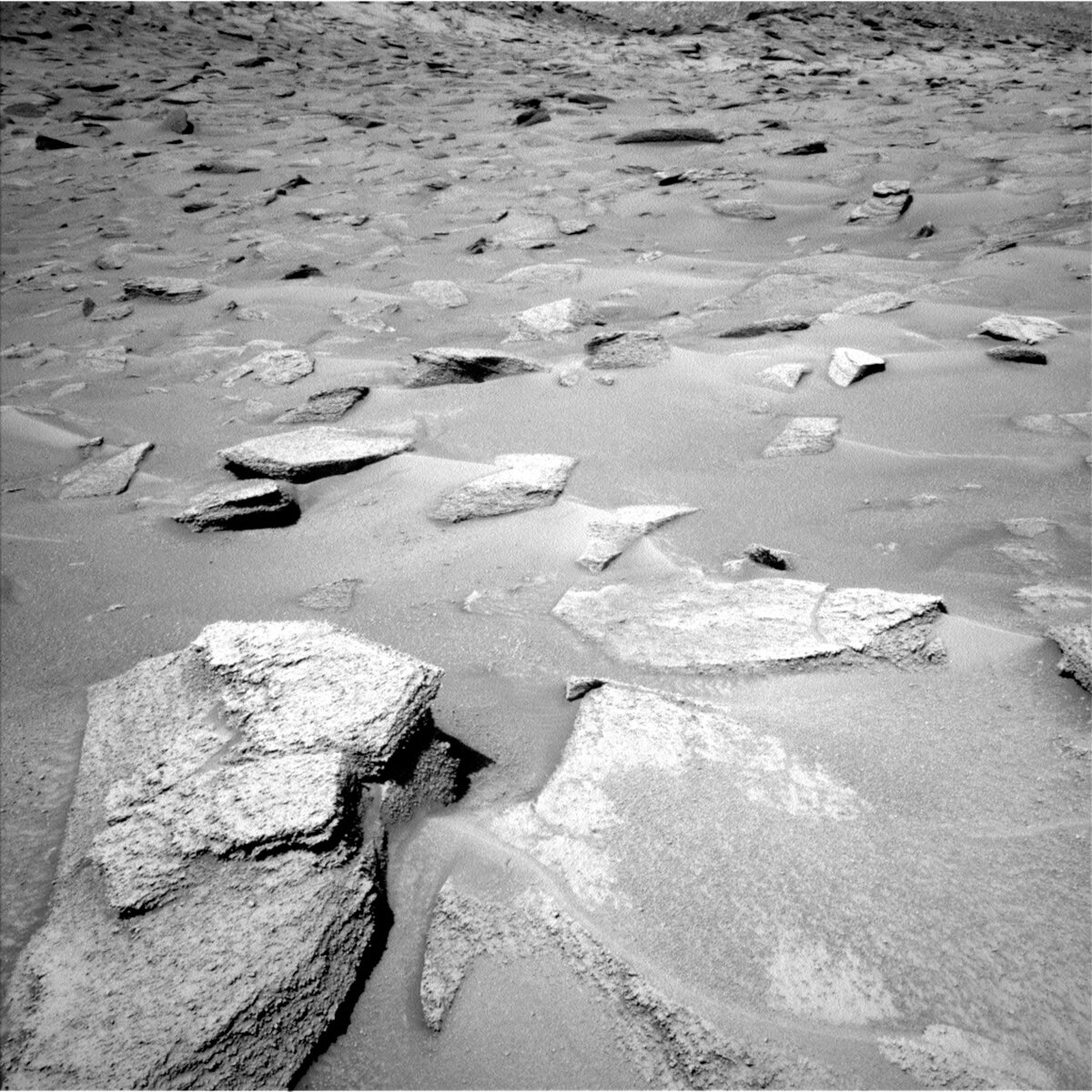Earth planning date: Friday, June 23, 2023
Today we started planning at a location short of our intended drive end position. Mars has, once again, not read our script! Regular readers of this blog will have noticed lately that many reports start with some news about a shortened drive that didn't quite complete, and that Abigail got really excited on June 20th, when three drives in a row had completed successfully. And that's not the rover's fault and of course also not the fault of our excellent engineers who try to navigate this extremely challenging terrain. If we could put on a spacesuit and walk around there, we would have to carefully test every step before we put weight on the foot. This is because large rocks are mixed with loose sand, and Curiosity is also climbing uphill to get to the next location. It is impossible to judge just from looking at these rocks, if they will stay in place when weight is put on them. Anyone of you regularly hiking in the mountains or along beaches with lots of boulders, will know what this means – and maybe even remember the grazes and bruises from an unlucky step. While the engineers cannot test every wheel turn before committing to it, the rover is really good at keeping itself safe and avoiding that unlucky step. When some rocks aren't well behaved, Curiosity stops to give us here on Earth a chance to assess and make the best decisions. So, while I am a little disappointed that we are not where we wanted to be, I also marvel at all the skills the rover has keeping itself safe out there. And I am a little jealous that I cannot be there myself. If you haven't seen the postcard from Mars yet, check it out! It's such a beautiful terrain!
A drive not ending where planned, often also means the arm gets a rest as it is not safe to use close to the rocks when we are not sure all six wheels are firmly on the ground. And today is no exception, for which reason there is no APXS and MAHLI in the plan. That means we have lots of time for ChemCam and Mastcam, which we make good use of. On the positive side, this terrain is complex and interesting from a geological perspective, you can see lamination and nodules, then there is the sand itself, which we have repeatedly investigated, and of course the hills in the distance, which are displaying the bigger picture of what is in front of us.
ChemCam has three LIBS targets in today's plan, a smooth bedrock target called ‘Solos,' a target on the side of the same block that has the Solos target on. ‘Doxa' is intended to investigate the lamination and also catch an alteration feature within the rock, and finally a target on a laminated area of a rock called ‘Balcony of Styx.' Together, those LIBS targets will give us a good overview of the chemical variation of the rock – and no, the reference to Styx is not a reference to what we think of this terrain! ChemCam also has two long distance imaging activities to document the hills around us, one of them looking at Peace Vallis from the new vantage point.
Mastcam has many interesting observations in this plan, starting with a multispectral observation on target on target ‘Xidia,' and continuing with a comprehensive investigation of the most recent sediments by imaging sand troughs in three separate observations, it supports one of the long distance imaging of ChemCam to give context to the very high resolution images that ChemCam produces, and has a multispectral observation on target ‘Xidia,' which may be a rock that does not quite belong to this area.
There are also atmospheric observations in the plan and DAN is looking at water in the subsurface. CheMin is also waking up for some house keeping, dumping the last sample and vibrating the funnel to clean it to get ready for sampling again. The next drive will hopefully get us to where we wanted to be today, or a few meters further up the hill. The terrain remains challenging, yet beautiful and highly interesting. Happy climbing, Curiosity, and stay safe out there!
Written by Susanne Schwenzer, Planetary Geologist at The Open University
from NASA Mars Rover Curiosity: Mission Updates https://ift.tt/KJcHSQV

Comments
Post a Comment